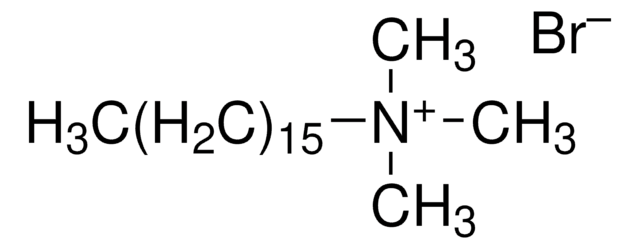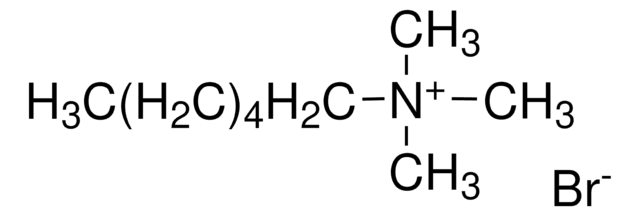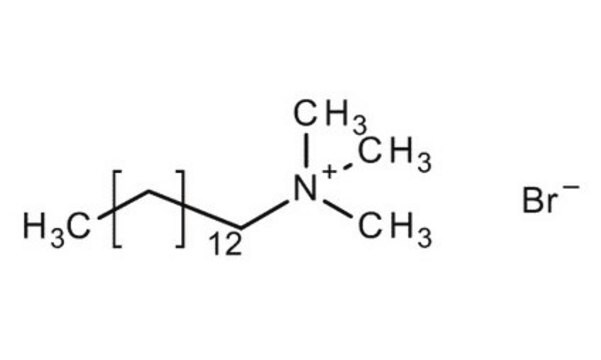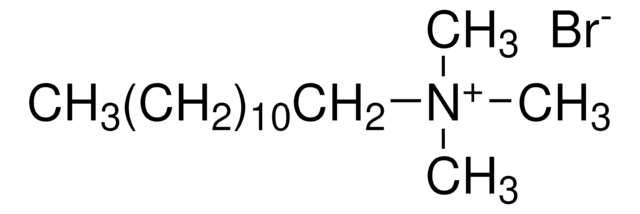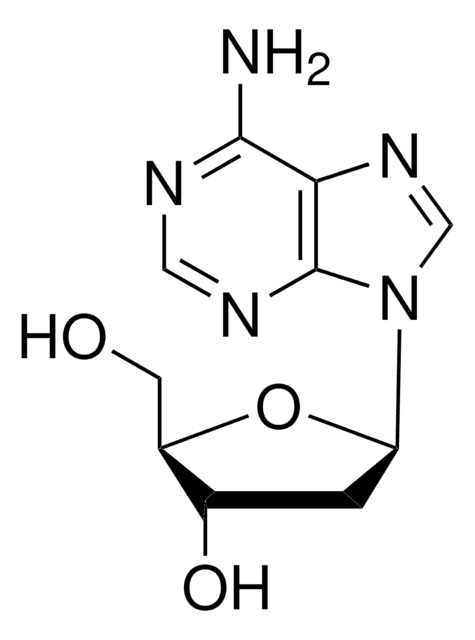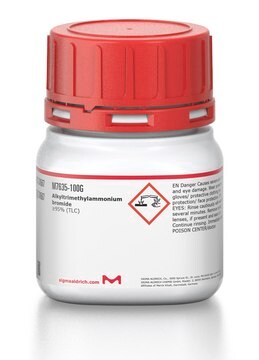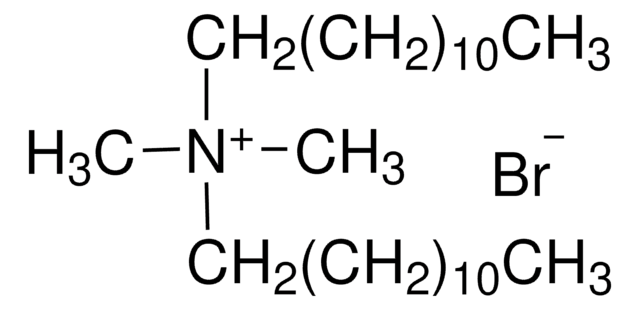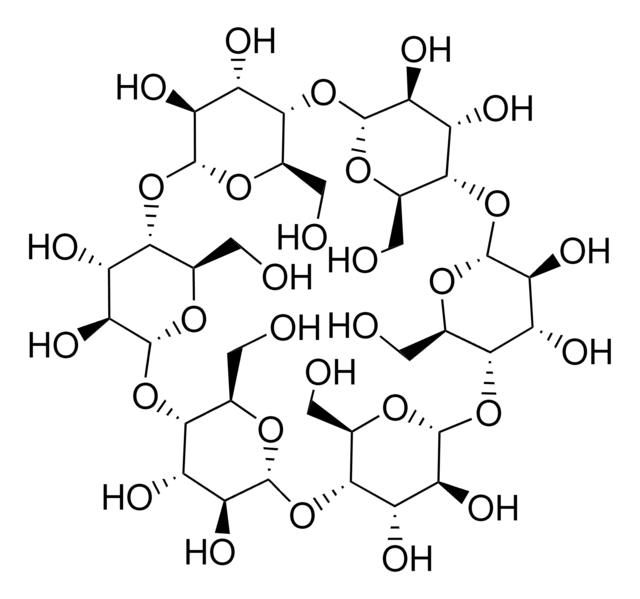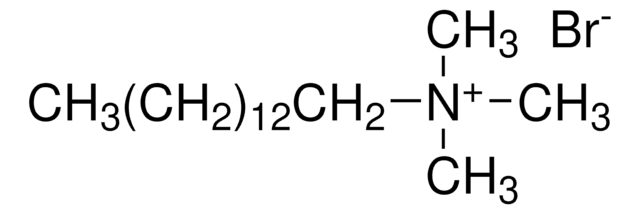D8638
Dodecyltrimethylammonium bromide
≥98%
Synonym(s):
Lauryltrimethylammonium bromide
About This Item
Recommended Products
biological source
synthetic (oragnic)
Quality Level
description
cationic
Assay
≥98%
form
powder
mol wt
308.34 g/mol
mp
246 °C (dec.) (lit.)
solubility
954 g/L at 20 °C
density
1.17 g/cm3 at 20 °C (68 °F)
SMILES string
[Br-].CCCCCCCCCCCC[N+](C)(C)C
InChI
1S/C15H34N.BrH/c1-5-6-7-8-9-10-11-12-13-14-15-16(2,3)4;/h5-15H2,1-4H3;1H/q+1;/p-1
InChI key
XJWSAJYUBXQQDR-UHFFFAOYSA-M
Looking for similar products? Visit Product Comparison Guide
General description
Beyond protein solubilization, this cationic detergent also finds application in DNA extraction procedures. Its ability to interact with DNA and alter its conformation facilitates the release of DNA from cellular components, enabling its subsequent purification and analysis. This property is particularly useful in the isolation of DNA from various biological samples, including tissues, cells, and microorganisms. Furthermore, DTAB demonstrates effectiveness in cell lysis processes. Its ability to disrupt cell membranes and release intracellular components makes it a valuable tool for breaking down cells and accessing their contents. This property has applications in various biological studies, including protein extraction, enzyme assays, and cellular component analysis.
Dodecyltrimethylammonium bromide (DTAB) stands as a versatile and widely applicable surfactant with a diverse range of applications in proteomics research, cell biology, and biochemical research. Its ability to solubilize proteins and peptides, extract DNA, and lyse cells makes it an essential tool for various biological studies and analytical techniques.
Application
Features and Benefits
Other Notes
comparable product
Signal Word
Danger
Hazard Statements
Precautionary Statements
Hazard Classifications
Acute Tox. 3 Oral - Aquatic Acute 1 - Aquatic Chronic 1 - Eye Irrit. 2 - Skin Irrit. 2
Storage Class Code
6.1C - Combustible acute toxic Cat.3 / toxic compounds or compounds which causing chronic effects
WGK
WGK 3
Flash Point(F)
Not applicable
Flash Point(C)
Not applicable
Personal Protective Equipment
Certificates of Analysis (COA)
Search for Certificates of Analysis (COA) by entering the products Lot/Batch Number. Lot and Batch Numbers can be found on a product’s label following the words ‘Lot’ or ‘Batch’.
Already Own This Product?
Find documentation for the products that you have recently purchased in the Document Library.
Customers Also Viewed
Our team of scientists has experience in all areas of research including Life Science, Material Science, Chemical Synthesis, Chromatography, Analytical and many others.
Contact Technical Service